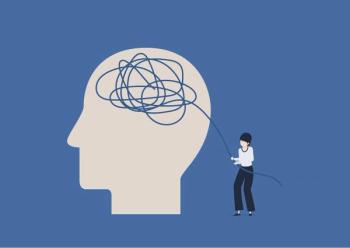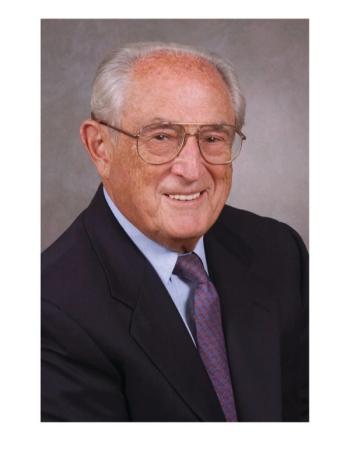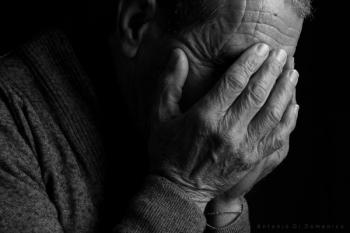
ECT Today: The Good It Can Do
Dr Stone's vivid description of the military's abusive use of ECT 50 years ago -- while compelling to read from an historical perspective -- should in no way be confused with ECT today.
Both the exclusively psychoanalytic treatment Dr Stone describes at McLean Hospital in the late 1950s and the horrific use of ECT at Fitzsimmons Army Hospital were unethical -- even according to standards of that time.1 While both practices may have been well intended, there was ample evidence available to know that ECT was necessary for severely ill patients and that, if prescribed, it should be given in modified form (ie, with general anesthesia and muscle relaxation). Barbiturate anesthesia, succinylcholine for muscle relaxation, and ventilation with oxygen had all been introduced to ECT technique in the early 1950s.2 Thus, at Mclean Hospital, patients were denied access to life-saving treatment, and at Fitzsimmons Army Hospital they were indiscriminately prescribed an outmoded form of therapy. One empathizes with Dr Stone’s subservient position while a resident and later as a subordinate Army officer, but wishes -- as he does now - - that he could have been more assertive in standing up for his patients’ right to appropriate treatment.
ECT is the only “somatic” treatment from the early 20th century that has survived. It has done so because of its unparalleled efficacy and safety. ECT is the most effective antidepressant treatment we have; response rates are typically in the 60% to 90% range.3-5 Because ECT is rarely given as a first line treatment, most ECT patients have already proven refractory to multiple trials of antidepressant and other psychotropic medications. Severely suicidal or catatonic patients often improve dramatically within 1 to 3 weeks of starting an ECT course. Interestingly, the most severely ill patients respond best to ECT; high severity of depressive symptoms, presence of melancholic and catatonic features, and psychosis all predict better outcomes with ECT.6,7 Where else in medicine is severity of illness a predictor of good outcome?
The technique of ECT has evolved over the years to the point that it is now a fully safe and painless procedure with a very acceptable side effect profile.8,9 Right unilateral electrode placement, brief pulse, and ultrabrief pulse stimulus waveforms all allow for reductions in cognitive impairment, such that most patients experience an acceptable level of largely transient memory impairment.10 Patients who are more urgently ill should still be treated with bilateral electrode placement because of its proven greater efficacy and speed of action.11 Much of the ECT in the United States is given on an outpatient basis; patients typically have their treatment in the morning and can leave the treating facility in about an hour after the procedure. Of course, the most severely ill patients, particularly those who are very suicidal, psychotic or catatonic, may still need to be cared for on an inpatient psychiatric unit.12
Fully informed consent is a feature of contemporary ECT in the United States and many other countries.13 In fact, because ECT is so closely scrutinized, more attention is paid to the process of informed consent with ECT than for most other medical procedures. Patients are given detailed information about the medical and cognitive risks of ECT; when balanced against the risks of remaining seriously depressed, many patients choose to have the treatment.
Unfortunately, the stigma surrounding ECT impedes the acceptance of the treatment by both patients and practitioners. While progress is being made on this front, active efforts of the antipsychiatry movement are an ongoing worry.14,15 Standing up for our patients’ right to appropriate treatment in 2010 means being willing to prescribe ECT when it is indicated; not allowing ourselves to be intimidated by sensationalist misinformation; and continuing to educate ourselves, our colleagues and our patients about the proper role of ECT in the treatment of severe psychiatric illness. All psychiatrists should know when to refer appropriately diagnosed patients for ECT. Dr Stone's memoir reminds us of just how far psychiatric practice has come in 50 years, and also that some of our desperately ill patients still need ECT, but in its modern form.
References:
References
1.Ottosson J-O, Fink M. Ethics in electroconvulsive therapy. New York: Brunner-Routledge; 2004.
2.Holmberg G, Thesleff S. Succinyl-choline-iodide as a muscular relaxant in electroshock therapy. Am J Psychiatry. 1952;108(11):842-846.
3.Fink M, Taylor MA. Electroconvulsive therapy: evidence and challenges. JAMA. 2007;298(3):330-332.
4.Kellner CH, Knapp RG, Petrides G, et al. Continuation electroconvulsive therapy vs pharmacotherapy for relapse prevention in major depression: a multisite study from the Consortium for Research in Electroconvulsive Therapy (CORE). Arch General Psych. 2006;63(12):1337-1344.
5.Petrides G, Fink M, Husain MM, et al. ECT remission rates in psychotic versus nonpsychotic depressed patients: a report from CORE. J ECT. 2001;17(4):244-253.
6.Brown WA. Treatment response in melancholia. Acta Psychiatr Scand Suppl. 2007(433):125-129.
7.Taylor MA, Fink M. Melancholia : the diagnosis, pathophysiology, and treatment of depressive illness. Cambridge ; New York: Cambridge University Press; 2006.
8.Lisanby SH. Electroconvulsive therapy for depression. N Engl J Med. 2007;357(19):1939-1945.
9.Potter WZ, Rudorfer MV. Electroconvulsive therapy--a modern medical procedure. N Engl J Med. 1993;328(12):882-883.
10.Prudic J. Strategies to minimize cognitive side effects with ECT: aspects of ECT technique. J ECT. 2008;24(1):46-51.
11.Kellner CH, Knapp R, Husain MM, et al. Bifrontal, bitemporal and right unilateral electrode placement in ECT: randomised trial. Br J Psychiatry. 2010;196:226-234.
12.Fink M, Abrams R, Bailine S, Jaffe R. Ambulatory electroconvulsive therapy: report of a task force of the association for convulsive therapy. Association for Convulsive Therapy. Convulsive Therapy. 1996;12(1):42-55.
13.American Psychiatric Association. Task Force on Electroconvulsive Therapy. The Practice of Electroconvulsive Therapy: Recommendations for Treatment, Training, and Privileging. Washington, DC: American Psychiatric Association; 2001.
14.Shorter E, Healy D. Shock therapy : a history of electroconvulsive treatment in mental illness. New Brunswick, NJ: Rutgers University Press; 2007.
15.Dukakis K, Tye L. Shock: the healing power of electroconvulsive therapy. New York: Avery; 2006.
Newsletter
Receive trusted psychiatric news, expert analysis, and clinical insights — subscribe today to support your practice and your patients.

















